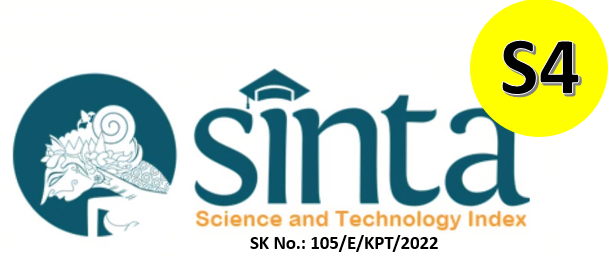Pemanfaatan Pati Sagu (Metroxylon sago) dan Limbah Kulit Jeruk Sebagai Bioplastik Pembungkus Makanan (Edible Film) Ramah Lingkungan
DOI:
https://doi.org/10.29080/biotropic.v8i1.2086Keywords:
Edible film, Sagu, Pectin, Metroxylon sagoAbstract
The increasing use of plastic harms the environment because plastic has properties that are difficult to degrade, resulting in environmental pollution, while the demand for plastic is increasing day by day. Bioplastics are a form of innovation from technological developments in modern times. One example of bioplastic is edible film which can function as food packaging that can be consumed. Edible film made from sago starch and orange pectin is believed to be able to produce edible films that have good characteristics. The results of this study, all nine treatment variations did not meet the standards for bioplastics that had been determined by SNI and JIS. The highest tensile strength values were obtained from testing variations in the concentration of 6% sago starch and 2% orange peel pectin (8,643 Mpa), while the highest elongation values were obtained from 4% sago starch and 2% orange peel pectin (5,33%.). Based on the results of the edible film using sago starch and pectin, it showed that more pectin content decrease the biodegradation rate.
Downloads
References
Akili, M. S., Ahmad, U., & Suyatma, N. E. (2012). Karakteristik edible film dari pektin hasil ekstraksi kulit pisang. Jurnal Keteknikan Pertanian, 26(1).
Akmalludin dan Kurniawan, Arie. Pembuatan Pektin dari Kulit Coklat dengan Cara Ekstraksi. Jurusan Teknik Kimia, Fakultas Teknik, Universitas Diponogoro: Semarang.
Astuti, Pudji, and Erprihana AA. 2014. Antimicrobial Edible film from Banana Peels as Food Packaging. American Journal of Oil and Chemical Technologies. 2 : 65–70.
Dewi, Rr, Artanti P, Aji S, and Puji DA. 2018. Physical Properties of Edible Sorgum Starch Film Added with Carboxymethyl Cellulose. Journal of Physical Science. 29: 185–94
European commission. 2011. Plastic Waste: Ecological and Human Health Impacts. Science for Environment Policy. 1–37.
Jading, A., E. Tethool, P. Payung, dan S. Gultom. 2011. Karakteristik Fisikokimia Pati Sagu Hasil Pengeringan Secara Fluidisasi Menggunakan Alat Pengering Cross Flow Fluidized Bed Bertenaga Surya Dan Biomassa. Reaktor. 13(3): 155164.
Kamsiati, E. Herawati, H. Purwani, E. 2017.Potensi Pengembangan Plastik Biodegradable Berbasis Pati Sagu Dan Ubikayu Di Indonesia. Jurnal Litbang Pertanian Vol 36 No 2.
Koffi, K., M. Yapo, B., & Besson, V. 2013. Extraction and Characterization of Gelling Pectin from The Peel of Poncirus trifoliata fruit. Agricultural Sciences, 04(11), 614–619.
Pradana, G. W., Jacoeb, A. M. and Ruddy, S. 2017. Karakteristik Tepung Pati dan Pektin Buah Pedada serta Aplikasinya sebagai Bahan Baku Pembuatan Edible film’, Jurnal Pengolahan Hasil Perikanan Indonesia, 20(3) : 609–619. Available at: journal.ipb.ac.id/index.php.jphpi
Souza,A.C., Musa, H., Bhatia, P.G ., and Martins, E. 2011. Evaluation of Physicochemical Properties of Eleusine coracana starch. Journal of Pharmaceutical Sciences, 10(1):91-102.
Syarifudin A. Dan Yunianta.2015. Karakterisasi Edible film dari Pektin Albedo Kulit Jeruk Bali dan Pati Garut. Jurna Pangan dan Agroindustri, 3(4):1538-1547
Surono, Untoro B. 2013. Berbagai Metode Konversi Sampah Plastik. Jurnal Teknik. 3: 32–40
Utami, M. R., dan Widiarti, N. 2014. Sintesis Plastik Biodegradable Dari Kulit Pisang Dengan Penambahan Kitosan dan Plasticizer Gliserol. Indonesian Journal of Chemical Science, 3(2): 64–167
Westling, A.R., M. Stading, A.M. Hermanson, and P. Gatenholm. 1998. Structure, Mechanical And Barrier Properties Of Amylose And Amylopectin Film. Carbohydrate Polimers 36: 217224.
Winarno, F.G. 2008. Kimia Pangan dan Gizi Edisi Terbaru. Gramedia Pustaka Utama. Jakarta.
Downloads
Published
How to Cite
Issue
Section
License
Copyright (c) 2024 Nirmala Fitria Firdhausi, Ajeng Ayu Ramadhani, Hawwa’ Cahya Maulida

This work is licensed under a Creative Commons Attribution-NonCommercial-ShareAlike 4.0 International License.













